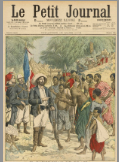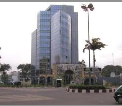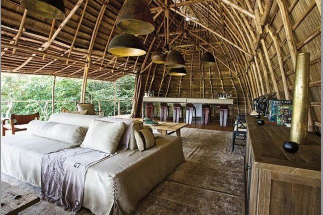http://www.wilderness-collection.com
BRAZZAVILLE TO HOST AFRICAN AIRLINES ASSOCIATION EVENT
BRAZZAVILLE, Congo - The national airline of the Republic of the
Congo, ECAir (Equatorial Congo Airlines), is organising the 47th
Annual General Assembly and the Summit of the African Airlines
Association (AFRAA) from the 8 to the 10 November 2015 in
Brazzaville. The theme will be "Open skies: Growth through
competition and collaboration". The event has been organised under
the patronage of His Excellency, Denis Sassou-Nguesso, President of
the Republic of the Congo.
AFRAA regroups 45 African airline members and around a hundred
industrial partners, including aircraft and engine manufacturers,
consultants, and high technology service providers, as well as
representatives of governments, airports and international
organisations.
The Association was created in 1964. Its mission is to encourage and
support African companies as they develop their air transport
services. It also aims to facilitate cooperation between African
companies in order to develop interconnectivity and establish a
maximum of intra-African relationships. The AFRAA General Assembly
is a unique business event in Africa and it takes place every year
in November. It is organised by an African airline and is attended
by an average of 400 participants. This includes airline directors,
chief executive officers and decision-makers on a global scale.
During this event, participants explore the challenges of the
aeronautical industry and debate on which measures to implement in
order to improve air transport growth across the continent.
Fatima Beyina-Moussa, ECAir managing director and AFRAA President,
will also participate in a round table with other directors of
African airlines: Mbuvi Ngunze, Kenya Airways managing director,
Tewolde Gebremariam, Ethiopian Airlines president and managing
director, Sherif Fathi, EgyptAir president and managing director,
Abderahmane Berthe, Air Burkina managing director, Sanjeev Gahdia,
Astral Aviation managing director, and Khellil Faical, Tassili
Airlines managing director.
The AFRAA General Assembly will put the spotlight on the Republic of
the Congo's aims and challenges with regard to air transport, thanks
to dialogue between aeronautical experts. Eight airports have either
been restored or built in 10 years in the Republic of the Congo.
Last August, national airline, ECAir, reached a big milestone: one
million passengers have been transported since the airline was
created four years ago.
The Summit's Brazzaville location will attract the attention of the
world industry towards the Congolese capital's extraordinary
opportunities, particularly with regard to the Maya-Maya Airport.
Furthermore, commercial and tourism ties will be strengthened
throughout the continent and with new and traditional markets
outside of Africa (Dubai, China, Europe).
CONGO RIVER'S GRAND INGA
DAM 'COULD POWER AFRICA
BBC - 2014 - The idea of using the mighty Congo river to provide electricity
across the African continent has been around since the 1960s.
Now, thanks to a recent deal signed by South Africa promising to buy electricity
from the planned Grand Inga dam, in eight years' time it may start to become a
reality.
If the full project is completed, the Grand Inga would be the largest hydropower
station in the world.
Maud Jullien visited the existing dams on the Congo and the site for the new,
larger structure.
Where are the Inga Dams located?
The Inga dams are located in western Democratic Republic of the
Congo, 50 km upstream of the mouth of the Congo River, and 225 km (140 miles)
south west of Kinshasa on the Congo River. The Congo River is the world’s second
largest in terms of flow (42,000m3/s), after the Amazon, and the second longest
river in Africa (4,700km), after the Nile River. It empties into the equatorial
Atlantic Ocean creating what is famously known as the Congo Plume. The plume is
a high productivity area arising from the rich nutrient flow from the river and
is detected as far as 800km offshore. The plume accounts for 40%-80% of total
carbon productivity and is one of the largest carbon sinks in the world.
The river is unique in that it has large rapids and waterfalls
very close to the mouth while most rivers have these features upstream. The dam
site is on the largest waterfall in the world by volume, the Inga Falls. Inga
Falls is a series of falls and rapids that drop in elevation via small rapids.
The main falls are 4 km wide, dropping to about 21.37 metres near a bend and
forming hundreds of channels and rivulets and many small islands. At the Grand
Inga site the Congo River drops 96 meters in a run of 14.5 km.
The falls are currently incorporated into the Inga I and Inga II
hydroelectric facilities. The volume of the river diverted for Inga I and II is
approximately 30% of the average discharge. It is postulated that if the Grand
Inga project is built, it will draw as much as two-thirds of the river water, if
not more.
Why is Grand Inga being proposed?
Africa faces a huge energy gap that has contributed to slow economic development
and poverty. On the other hand Africa has a huge potential for all forms of
energy, hydropower, solar, wind and fossil fuel energy. The proponents of the
Grand Inga project (mainly African governments and development organizations)
consider hydropower to be clean renewable energy.
They have put forward arguments that the Grand Inga hydropower scheme will
provide cheaper and readily available energy and allow Africa’s industrial and
manufacturing industry to take off. In addition the project is promoted as being
good for promoting peace in the region and for the environment. However, a
number of concerns that include environmental and social impacts of this project
have not yet been addressed and all energy options are still to be explored.
SOUTH AFRICA SIGNS GRAND INGA POWEER PROJECT
TREATY WITH CONGO
By Franz Wild October 30, 2013
South Africa and the Democratic Republic of Congo signed a treaty to jointly
develop a hydropower project that will eventually provide about 40,000 megawatts
of electricity to the continent.
The Grand Inga project on the Congo River will cost as much as $100 billion,
President Jacob Zuma said in a speech, a copy of which was e-mailed yesterday.
“The Grand Inga project has the potential to ‘light up’ the region and further
boost economic growth of the surrounding countries,” Zuma said in Kinshasa,
Congo’s capital. “This will also provide South African companies with further
investment opportunities including in other areas of infrastructure.”
STORY: The World
Isn't As Fragile as the U.S. Thinks
Grand Inga will be built in six phases before reaching full capacity, according
to Congo’s Energy Ministry. One megawatt is enough to supply 2,000 average
European homes.
Congo will choose a developer from three groups of companies, the ministry has
said previously. The groups are made up of China Three Gorges Corp. and
Sinohydro Corp. (601669); Posco (005490) and Daewoo Corp. (047050) of South
Korea in partnership with Canada’s SNC-Lavalin Group Inc. (SNC); and Actividades
de Construccion y Servicios SA, based in Madrid, and Spain’s Eurofinsa Group
have submitted a third bid.
Congo currently has about 2,400 megawatts of installed capacity, about half of
which is available because of mismanagement, the World Bank said last year. Only
about 10 percent of the country’s 70 million people have electricity, according
to the Energy Ministry. South Africa, the continent’s biggest economy, has
installed capacity of about 40,000 megawatts.
BRAZZAVILLE IS FIRST AFRICAN CITY TO BE DESIGNATED UNESCO
CREATIVE CENTRE
New York, US- Brazzaville, the capital and largest city of the Republic of
Congo, has become the first city to be designed by the UN Educational,
Scientific and Cultural Organisation (UNESCO) as a member of its network of
“creative hubs” promoting socio-economic and cultural development worldwide
through creative industries.
Other cities that were designated alongside Brazzaville are Zahle (Lebanon),
Krakow (Poland) and Fabriano (Italy).
Brazzaville was designated “City of Music” within the Creative Cities Network,
which was launched by UNESCO in 2004 to develop international cooperation among
cities that have recognised creativity as a driver for sustainable development.



